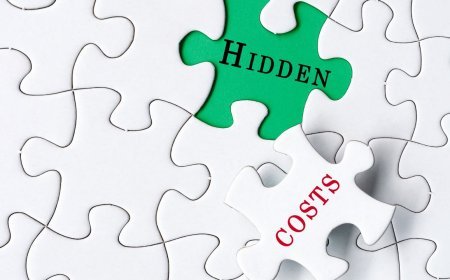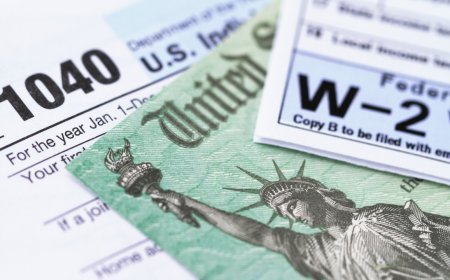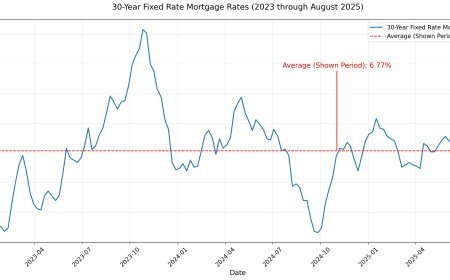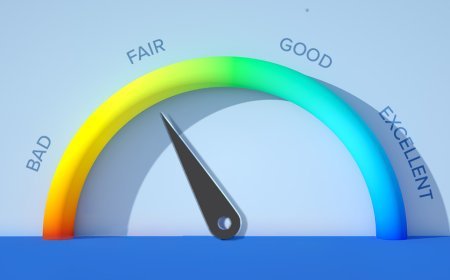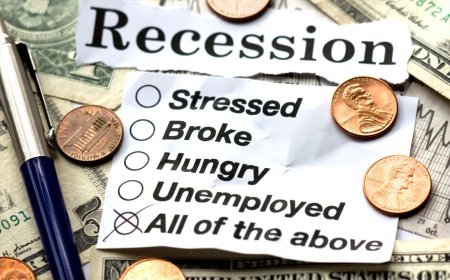50/30/20 Budgeting Rule: A Simple Guide to Managing Your Finances

The 50/30/20 budgeting rule is a simple and effective way to manage your money. This method divides your after-tax income into three categories. You'll allocate 50% for needs, 30% for wants, and 20% for savings and debt repayment.
This approach helps you understand where your money goes. It also makes it easier to reach financial goals without feeling restricted.
By following this budgeting rule, you can take control of your personal finance and make smart choices about your spending. You'll learn to prioritize essential expenses while still enjoying the things that make life enjoyable. This balance can lead to less stress around money and more confidence in your financial decisions.
Not only does the 50/30/20 rule simplify your budgeting process, but it also encourages good habits for money management. You'll find yourself building savings and paying off debt more easily, allowing you to create a brighter financial future. This method is accessible for anyone, regardless of their current financial situation.
Understanding the 50/30/20 Rule
The 50/30/20 budgeting rule is a simple way to manage your post-tax income. This method helps you divide your salary into clear categories. Let’s explore the basics, how to allocate your income, and how it compares to other budgeting methods.
The Basics of the 50/30/20 Budget
The 50/30/20 rule is all about dividing your money into three parts: needs, wants, and savings. Here’s how it breaks down:
-
50% for Needs: This covers essentials like housing, food, utilities, and transportation. These are expenses you must pay every month.
-
30% for Wants: This portion is for the things you enjoy but don’t need, such as dining out, entertainment, and hobbies.
-
20% for Savings: Put this part away for savings, retirement, or paying off debt. This encourages a good financial habit.
This method keeps budgeting straightforward and manageable, making it easier for you to track your expenses.
Allocating Your Monthly Income
To apply the 50/30/20 rule, start by calculating your post-tax income. After you know this number, follow these steps:
-
Calculate 50%: Take half of your monthly income and set it aside for needs.
-
Calculate 30%: Allocate 30% for your wants. This is where you can be flexible.
-
Calculate 20%: Finally, set aside 20% for savings or debt repayment. This is crucial for building your financial future.
Using this method helps you see where your money goes. You can use a simple spreadsheet or budgeting app to keep track of your spending.
Differences From Other Budgeting Methods
The 50/30/20 rule differs from other budgeting strategies like zero-based budgeting or the envelope system.
-
Zero-based Budgeting: Every dollar must have a purpose. This method requires more detailed planning as you need to justify every expense.
-
Envelope System: This approach involves physical envelopes for each category containing cash. It's very hands-on and can help control spending, but it may not be as practical for everyone.
-
50/15/5 Rule: This variant adjusts the percentages, suggesting 50% for needs, 15% for wants, and 5% for savings. It’s stricter on savings.
The 50/30/20 rule offers a more balanced approach, making it easier to enjoy your money while also saving for the future.
Essential Expenses: The 50%
In the 50/30/20 budgeting rule, essential expenses make up a significant part of your monthly budget. It's important to identify these costs to maintain your financial health. This section covers your key needs, including housing, food, and transportation.
Housing Costs and Utilities
Housing is often your largest expense each month. Whether you pay rent or a mortgage, this cost should ideally stay within 50% of your total budget.
- Rent/Mortgage: Aim for a comfortable amount that allows you to live well without financial strain. Ideally, this should cover your monthly rent or mortgage payment.
- Utilities: Don’t forget to include electricity, water, gas, and internet bills. These are crucial for everyday living.
Set aside a specific portion of your budget for housing to avoid overspending.
Groceries and Food Essentials
Groceries are a necessary part of your monthly expenses. You need to plan carefully to stay within your budget.
- Essentials First: Focus on buying essential items like fruits, vegetables, grains, and proteins. Limit spending on snacks and luxury food items.
- Meal Planning: Create a weekly meal plan. This helps you avoid impulse buys and reduces waste.
By prioritizing your grocery needs, you can eat healthily without overspending.
Transportation and Essential Bills
Transportation costs are another important part of your essential expenses. This category includes public transportation fees, gas, and maintenance.
- Public Transport: If you use buses or trains, factor in your monthly passes.
- Car Expenses: If you own a vehicle, budget for gas, insurance, and maintenance.
These expenses keep you mobile and should be tracked closely to avoid financial strain. Make sure you know how much you spend and adjust as needed to stay within your budget.
Flexible Spending: The 30%
In this section, you will explore how to manage the 30% of your budget that goes toward flexible spending. Understanding wants versus needs is key, as well as finding balance in your spending habits.
Understanding Wants Versus Needs
When budgeting, it's crucial to know the difference between wants and needs. Needs are essentials like food, housing, and transportation. They are things you cannot live without.
Wants are nice-to-haves that improve your quality of life but are not essential. For example, dining out, streaming subscriptions, and gym memberships fall into this category.
By clearly distinguishing between these two types of expenses, you can make better choices about where to allocate your flexible spending. This understanding helps you enjoy your life while still keeping your financial goals in mind.
Managing Non-Essential Expenses
Now that you know wants and needs, it’s time to manage your non-essential expenses wisely. Create a list of your discretionary spending items. This may include dining out, entertainment, or hobbies.
Track your spending on these items for a month. Look for patterns or areas where you can cut back. Simple changes, like dining out less frequently or opting for more affordable entertainment options, can make a big difference.
Consider setting limits on how much you’ll spend in each category. This can help you enjoy your wants without overspending and ensure you stay on track with your budget.
Balancing Leisure and Financial Goals
Balancing leisure activities with your financial goals is essential. You want to enjoy life while being responsible.
Start by prioritizing your spending. Make a list of activities or subscriptions you value most. If you love going out to eat or watching movies, identify what makes those experiences enjoyable.
Allocate part of your flexible spending toward these activities while keeping an eye on your savings. For example, if you enjoy dining out, aim for once a week instead of several times. This approach lets you enjoy your life while making progress toward your financial goals, creating a healthier financial life.
Financial Priorities: The 20%
The 20% of your budget focuses on your financial goals. This includes paying off debts, saving for emergencies, and contributing to retirement. Each of these areas plays a key role in building your financial future and achieving financial freedom.
Debt Repayments and Savings
Paying off debt should be one of your top priorities. High-interest debts, like credit cards, can drain your finances. Aim to allocate a portion of your 20% towards these debts each month. Consider using strategies like the debt snowball method, where you pay off smaller debts first, or the debt avalanche method, focusing on those with the highest interest rates.
In addition to debt repayment, it's essential to save for your future. Set specific savings goals to help you stay on track. This could be saving for a vacation, education, or a big purchase.
Building an Emergency Fund
An emergency fund is a vital part of your financial safety net. Aim to save at least three to six months’ worth of living expenses. This fund will help you handle unexpected costs, like medical bills or car repairs, without going into debt.
Start small by saving a set amount each month. You can even automate transfers to your savings account to make it easier. Over time, watching your emergency fund grow will give you peace of mind and security.
Retirement Contributions and Investments
Contributing to your retirement account is crucial to secure your future. Start by taking advantage of employer-sponsored plans, like a 401(k, especially if there’s a matching contribution. This is essentially free money.
If you're already contributing, consider increasing your percentage as you pay off debts. Besides retirement accounts, learn about investments. Investing early can significantly boost your savings due to compound interest. Small, regular contributions to a Roth IRA or other investment accounts can set you on the path to financial independence.
Customizing the 50/30/20 Rule
Adjusting the 50/30/20 rule to fit your life can make budgeting smoother. You can tailor your budget to factors like income variability, personal goals, and unique situations. Here’s how to get started.
Adapting to a Variable Income
If you have a variable income, budgeting can feel tricky. The 50/30/20 rule may need some tweaking. Instead of using a fixed monthly net income, look at your average income over several months.
-
Calculate Monthly Averages: Add your income from the past few months and divide by the number of months. This gives you a reliable figure.
-
Adjust Your Categories: Use this average to allocate funds for needs, wants, and savings. You might need to lower your wants category during lean months and prioritize savings during better months.
-
Create a Buffer: Building a cushion can help you manage expenses when income dips. Consider setting aside an emergency fund to cover up to three months of needs.
Personalizing Your Budget Plan
Personalizing your budget plan helps ensure it works for you. The 50/30/20 rule is flexible and can be adjusted based on your priorities.
-
Identify Needs: List your essential expenses like rent, utilities, and groceries. Make sure these fit within the 50% cap.
-
Define Wants: Understand what you enjoy but can live without. This can include dining out, subscriptions, or shopping. Aim to keep these within 30%.
Situational Adjustments and Tips
Life can change, and your budget should, too.
-
Life Events: If you experience a life change like a job loss or a new job, revisit your budget. Adjust your spending categories based on your current situation.
-
Seasonal Expenses: Keep in mind seasonal costs, like holiday gifts or back-to-school supplies. Plan ahead to manage these within your budget.
-
Review Regularly: Make it a habit to review your budget monthly. This can help you spot patterns and adjust where needed.
Using these tips, you can customize the 50/30/20 rule to fit your unique financial situation.
What's Your Reaction?
 Like
0
Like
0
 Dislike
0
Dislike
0
 Love
0
Love
0
 Funny
0
Funny
0
 Angry
0
Angry
0
 Sad
0
Sad
0
 Wow
0
Wow
0
